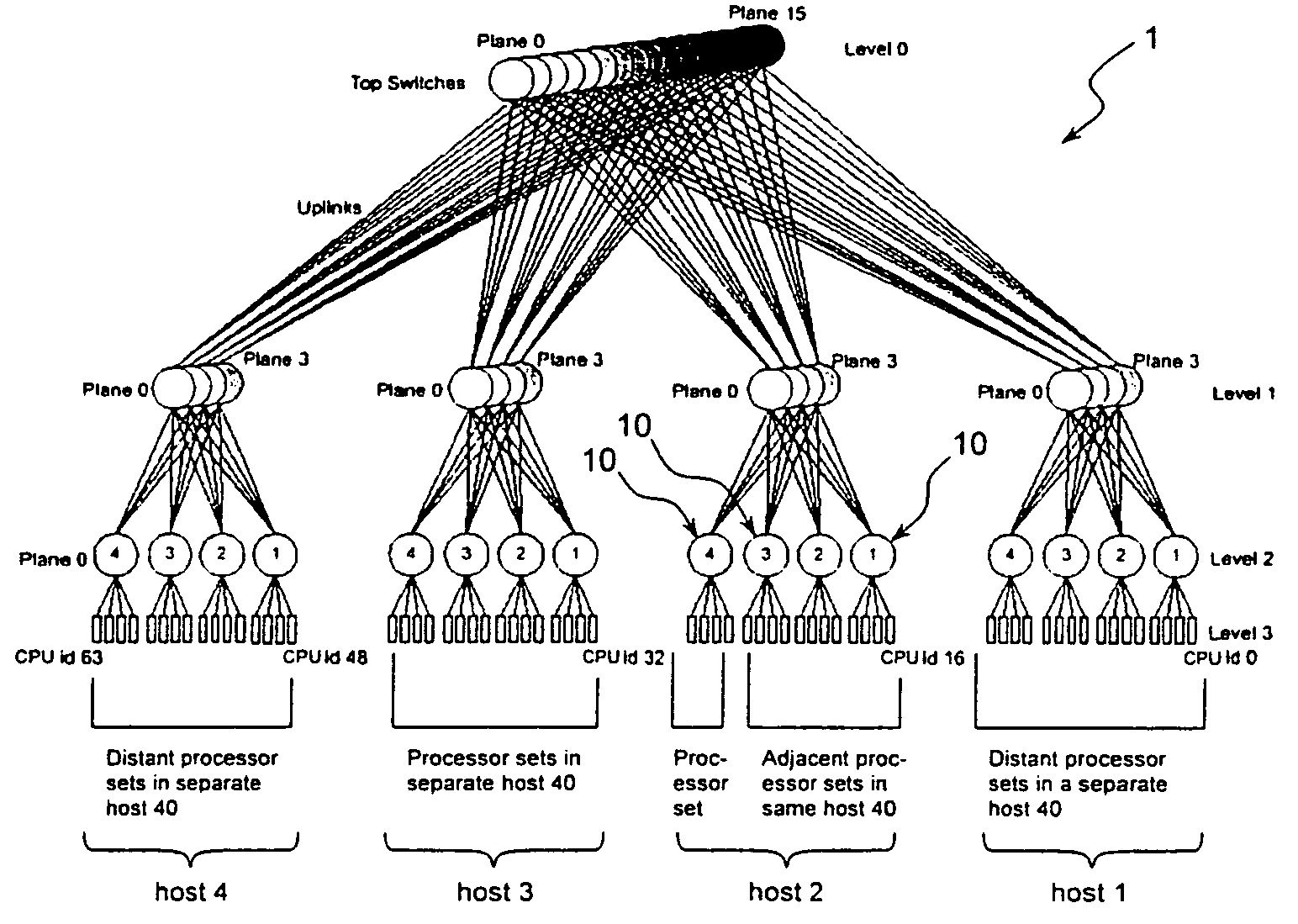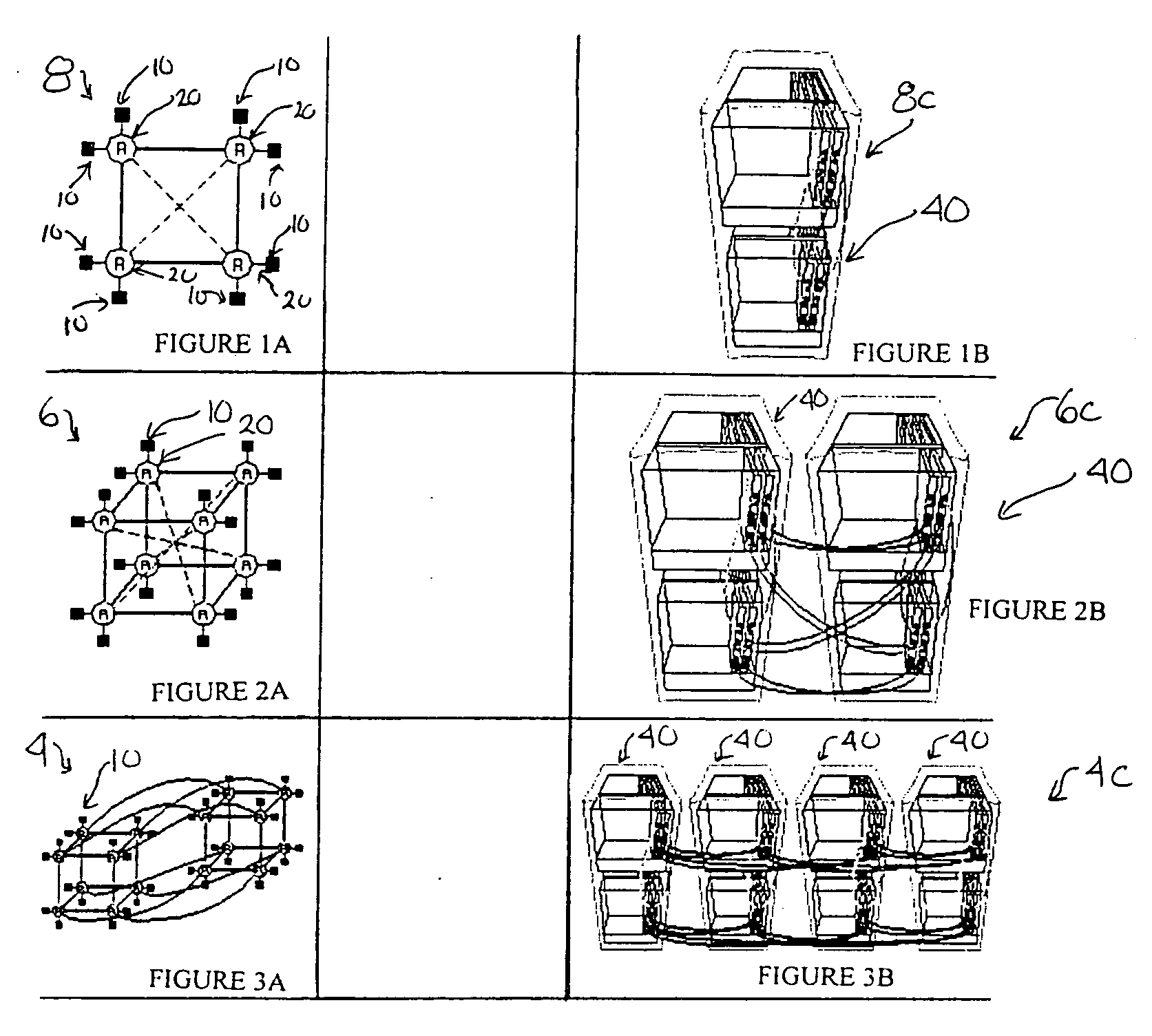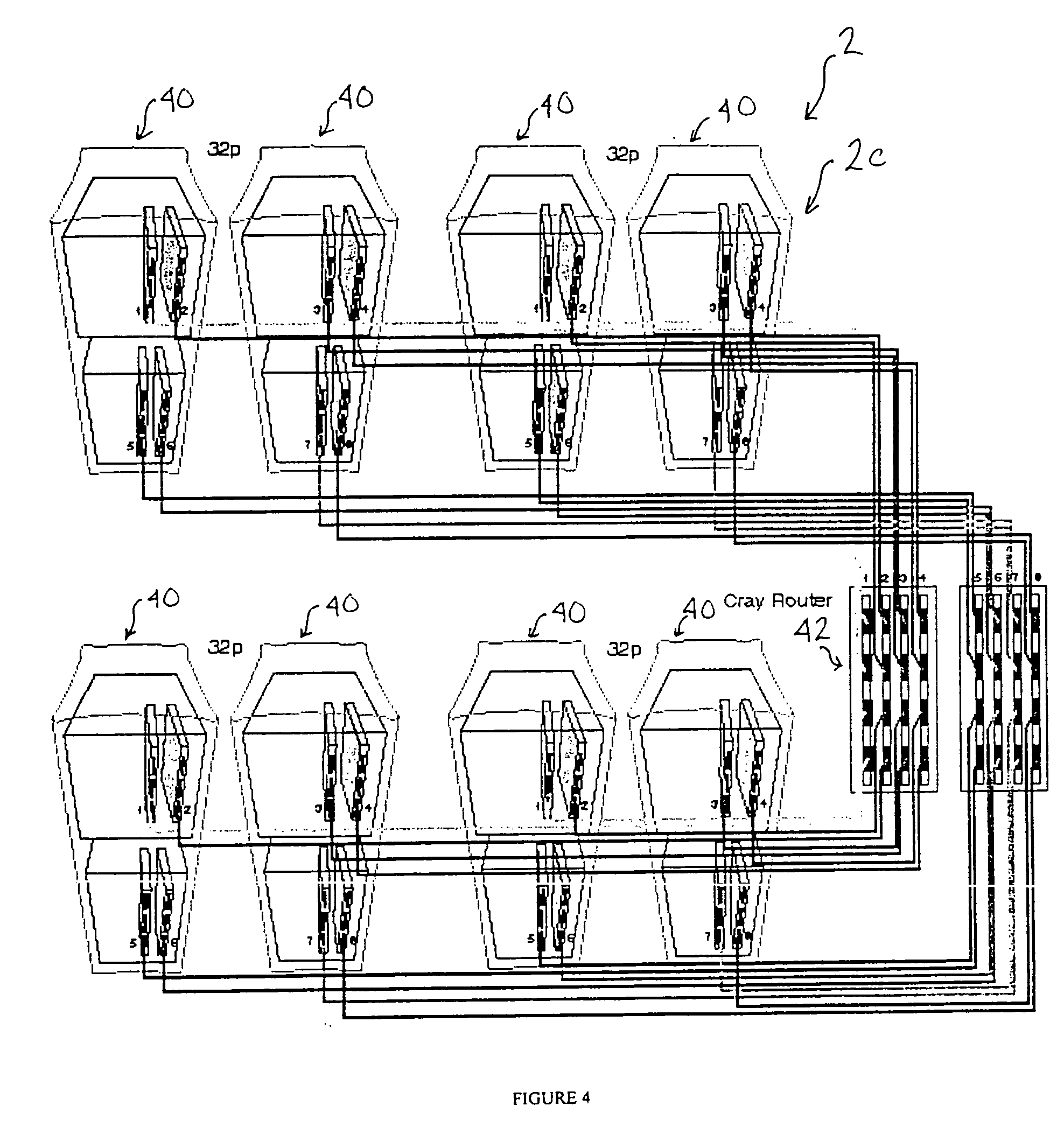[0019] Accordingly, one
advantage of the present invention is that the
scheduling system comprises a topology monitoring unit which is aware of the physical topology of the machine comprising the CPUs, and monitors the status of the CPUs in the computer system. In this way, the topology monitoring unit provides current
topological information on the CPUs and node boards in the machine, which information can be sent to the scheduler in order to schedule the jobs to the CPUs on the node boards in the machine. A further
advantage of the present invention is that the
job scheduler can make a decision as to which group of processor or node boards to send a job based on the current
topological information of all of the CPUs. This provides a single decision point for allocating the jobs in a NUMA machine based on the most current and transcient status information gathered by the topology monitoring unit for all of the node boards in the machine. This is particularly advantageous where the batch
job scheduler is allocating jobs to a number of host machines, and the topology monitoring unit is monitoring the status of the CPUs in all of the hosts.
[0020] In one embodiment, the status information provided by the topology unit is indicative of the number of free CPUs for each radius, such as 0, 1, 2, 3 . . . N. This information can be of assistance to the
job scheduler when allocating jobs to the CPUs to ensure that the requirements of the jobs can be satisfied by the available resources, as indicated by the topology monitoring unit. For larger systems, rather than considering radius, the distance between the processor may be calculated in terms of
delay, reflecting that the time
delay of various interconnections may not be the same.
[0021] A still further
advantage of the invention is that the efficiency of the overall NUMA machine can be maximized by allocating the job to the “best” host or module. For instance, in one embodiment, the “best” host or module is selected based on which of the hosts has the maximum number of available CPUs of a particular radius available to execute a job, and the job requires CPUs having that particular radius. For instance, if a particular job is known by the job scheduler to require eight CPUs within a radius of two, and a first host has 16 CPUs available at a radius of two but a second host has 32 CPUs available at a radius of two, the job scheduler will schedule the job to the second host. This balances the load of various jobs amongst the host. This also reserves a number of CPUs with a particular radius available for additional jobs on different hosts in order to ensure resources are available in the future, and, that the load of various jobs will be balanced amongst all of the resources. This also assists the topology monitoring unit in allocating the resources to the job because more than enough resources should be available.
[0022] In a further embodiment of the present invention, the batch
scheduling system provides a job
execution unit associated with each execution host. The job
execution unit allocates the jobs to the CPUs in a particular host for parallel execution. Preferably, the job
execution unit communicates with the topology monitoring unit in order to assist in advising the topology monitoring unit of the status of various node boards within the host. The job execution unit can then advise the job topology monitoring unit when a job has been allocated to a group of nodes. In a preferred embodiment, the topology monitoring unit can allocate resources, such as by allocating jobs to groups of CPUs based on which CPUs are available to execute the jobs and have the required resources such as memory.
[0023] A further advantage of the present invention is that the job scheduling unit can be implemented as two separate schedulers, namely a standard scheduler and an external scheduler. The standard scheduler can be similar to a conventional scheduler that is operating on an existing machine to allocate the jobs. The external scheduler could be a separate portion of the batch job scheduler which receives the status information signals from the topology monitoring unit. In this way, the separate external scheduler can keep the specifics of the status information signals apart from the main scheduling loop operated by the standard scheduler, avoiding a decrease in the efficiency of the standard scheduler. Furthermore, having the external scheduler separate from the standard scheduler provides more robust and efficient
retrofitting of existing schedulers with the present invention. In addition, as new topologies or memory architectures are developed in the future, having a separate external scheduler assists in upgrading the job scheduler because only the external scheduler need be upgraded or patched.
[0024] A further advantage of the present invention is that, in one embodiment, jobs can be submitted with a topology requirement set by the user. In this way, at job submission time, the user, generally one of the programmers sending jobs to the NUMA machine, can define the topology requirement for a particular job by using an optional command in the job submission. This can assist the batch job scheduler in identifying the resource requirements for a particular job and then matching those resource requirements to the available node boards, as indicated by the status information signals received from the topology monitoring unit. Further, any one of multiple programmers can use this optional command and it is not restricted to a single
programmer.
 Login to View More
Login to View More  Login to View More
Login to View More 


